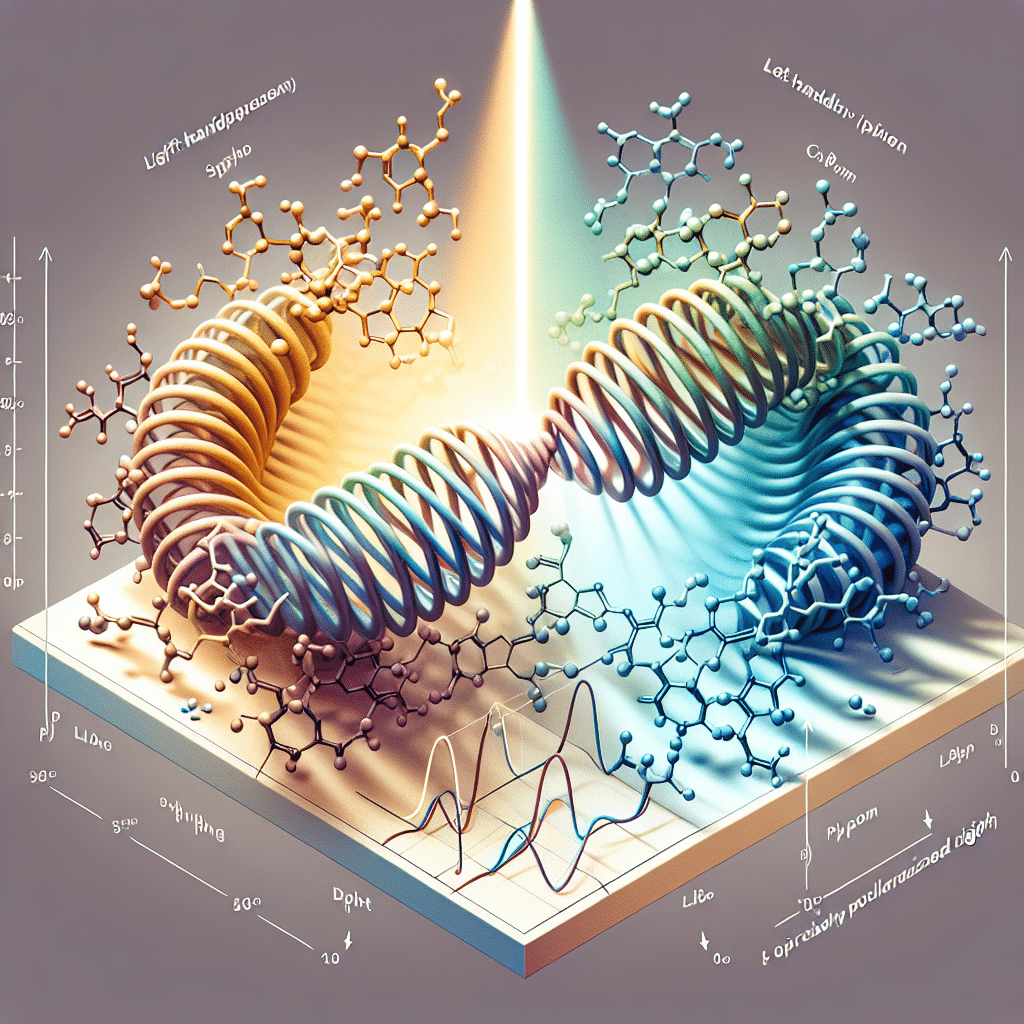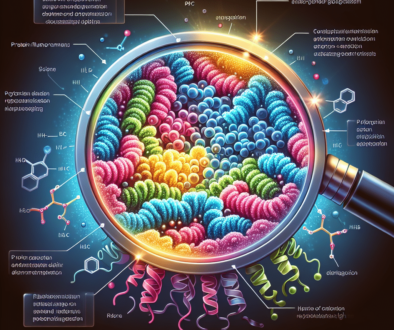Circular Dichroism of Proteins: Unraveling Molecular Chirality
-
Table of Contents
- Circular Dichroism of Proteins: Decoding Molecular Chirality
- Understanding Circular Dichroism
- The Chirality of Proteins
- CD Spectroscopy in Protein Analysis
- Case Studies and Examples
- Statistical Relevance in Protein Research
- Conclusion: Key Takeaways on Circular Dichroism and Protein Chirality
- Discover High-Quality Proteins with ETprotein
Circular Dichroism of Proteins: Decoding Molecular Chirality

Proteins are the workhorses of the cell, performing a vast array of functions critical for life. Understanding their structure is essential for grasping how they function. One powerful technique for probing the structure of proteins is circular dichroism (CD) spectroscopy. This method is particularly sensitive to the chiral nature of molecules, a property that is fundamental to the activity of proteins. In this article, we will explore the principles of circular dichroism, its application in studying protein structure, and how it contributes to our understanding of molecular chirality.
Understanding Circular Dichroism
Circular dichroism is a form of light absorption spectroscopy that measures the difference in the absorption of left-handed circularly polarized light versus right-handed circularly polarized light by chiral molecules. Proteins, with their chiral amino acids and three-dimensional structures, are ideal candidates for CD analysis. The resulting CD spectrum provides information about the secondary and tertiary structures of proteins, which are crucial for their biological function.
The Chirality of Proteins
Chirality is a geometric property of some molecules and ions. A chiral molecule/ion is non-superposable on its mirror image. The presence of an asymmetric carbon atom (a carbon atom with four different groups attached to it) is one common cause of chirality in organic molecules. Proteins are made up of chiral amino acids, which give rise to their complex three-dimensional structures and, consequently, their diverse functions.
CD Spectroscopy in Protein Analysis
CD spectroscopy is particularly useful for studying proteins because it can provide insights into the secondary structure content, such as alpha-helices, beta-sheets, and random coils. The technique can also detect changes in protein conformation due to environmental factors, ligand binding, or mutations.
- Secondary Structure Determination: CD spectroscopy can estimate the amount of alpha-helix, beta-sheet, and random coil in a protein by analyzing the characteristic CD signals associated with each structure.
- Conformational Changes: By monitoring CD spectra over time or under different conditions, researchers can observe conformational changes in proteins that are important for their function.
- Protein Folding: CD is used to study protein folding and stability, providing insights into the processes that govern protein structure formation.
- Protein-Ligand Interactions: Changes in CD spectra upon ligand binding can reveal information about the binding sites and the nature of the interaction.
Case Studies and Examples
Several studies have utilized CD spectroscopy to gain a deeper understanding of protein structure and function. For instance, CD has been instrumental in studying the misfolding of proteins associated with diseases such as Alzheimer’s and Parkinson’s. By comparing the CD spectra of normal and misfolded proteins, researchers can identify structural changes that may lead to pathogenesis.
In another example, CD spectroscopy was used to monitor the folding process of enzymes, revealing intermediate states that are critical for understanding the folding mechanism. These studies have implications for designing drugs that can stabilize or destabilize specific protein conformations.
Statistical Relevance in Protein Research
The use of CD spectroscopy in protein research is supported by a wealth of statistical data. For example, databases of CD spectra allow researchers to compare their results with known protein structures and predict secondary structure content with high accuracy. Additionally, statistical methods are used to analyze CD data and extract quantitative information about protein conformation.
Conclusion: Key Takeaways on Circular Dichroism and Protein Chirality
Circular dichroism spectroscopy is a powerful tool for studying the chiral nature of proteins and their structures. It provides valuable insights into protein folding, stability, and interactions, which are essential for understanding their function and for the development of new therapeutics. CD spectroscopy’s ability to detect subtle changes in protein conformation makes it an indispensable technique in the field of biochemistry and molecular biology.
Discover High-Quality Proteins with ETprotein
If you are involved in research or industrial applications requiring high-quality proteins, ETprotein offers a range of products that could significantly benefit your work. Their protein products are known for their purity, consistency, and performance in various applications.
ETprotein’s offerings include:
- Organic rice protein
- Clear rice protein
- Pea protein
- Clear pea protein
- Pumpkin seed protein
- Sunflower seed protein
- Mung bean protein
- Peanut protein
These proteins are ideal for a range of industries, including nutraceuticals, pharmaceuticals, cosmeceuticals, veterinary, and food and beverage sectors. With a commitment to non-GMO and allergen-free products, ETprotein ensures that you have access to the best ingredients for your needs.
About ETprotein:
ETprotein, a reputable protein Chinese factory manufacturer and supplier, is renowned for producing, stocking, exporting, and delivering the highest quality organic bulk vegan protein and plant proteins. They include Organic rice protein, clear rice protein, pea protein, clear pea protein, pumpkin seed protein, sunflower seed protein, mung bean protein, peanut protein etc. Their offerings, characterized by a neutral taste, non-GMO, allergen-free attributes, cater to a diverse range of industries. They serve nutraceutical, pharmaceutical, cosmeceutical, veterinary, as well as food and beverage finished product distributors, traders, and manufacturers across Europe, USA, Canada, Australia, Thailand, Japan, Korea, Brazil, and Chile, among others.
ETprotein specialization includes exporting and delivering tailor-made protein powder and finished nutritional supplements. Their extensive product range covers sectors like Food and Beverage, Sports Nutrition, Weight Management, Dietary Supplements, Health and Wellness Products, and Infant Formula, ensuring comprehensive solutions to meet all your protein needs.
As a trusted company by leading global food and beverage brands and Fortune 500 companies, ETprotein reinforces China’s reputation in the global arena. For more information or to sample their products, please contact them and email sales(at)ETprotein.com today.












